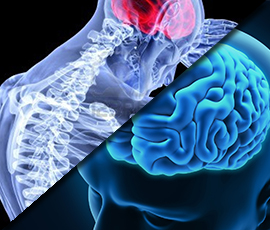
A stroke occurs when blood flow to a part of the brain stops. A stroke is sometimes called a "brain attack”, If blood flow is cut off for longer than a few seconds, the brain cannot get nutrients and oxygen. Brain cells can die, causing lasting damage.
Stroke is a disease that affects the arteries leading to and within the brain. It is the No. 5 cause of death and a leading cause of disability in the United States.
About 795,000 Americans each year suffer a new or recurrent stroke. That means, on average, a stroke occurs every 40 seconds, Stroke kills more than 137,000 people a year.
It's the No. 4 cause of death, About 40 percent of stroke deaths occur in males, and 60 percent in females.
There are two major types of stroke:
•Ischemic stroke
•Hemorrhagic stroke
Ischemic stroke occurs when a blood vessel that supplies blood to the brain is blocked by a blood clot. This may happen in two ways:
•A clot may form in an artery that is already very narrow. This is called a thrombotic stroke.
•A clot may break off from another place in the blood vessels of the brain, or from some other part of the body, and travel up to the brain. This is called cerebral embolism, or an embolic stroke.
A hemorrhagic stroke occurs when a blood vessel in part of the brain becomes weak and bursts open. This causes blood to leak into the brain. Some people have defects in the blood vessels of the brain that make this more likely. These defects may include:
•Aneurysm
•Arteriovenous malformation (AVM).
Hemorrhagic strokes may also occur when someone is taking blood thinners, such as warfarin (Coumadin). Very high blood pressure may cause blood vessels to burst, leading to hemorrhagic stroke.
An ischemic stroke can develop bleeding and become a hemorrhagic stroke.High blood pressure is the main risk factor for strokes.
The other major risk factors are:
•Atrial fibrillation
•Diabetes
•Family history of stroke
•High cholesterol
•Increasing age, especially after age 55
•Race (black people are more likely to die of a stroke)
Symptoms
The symptoms of stroke depend on which part of the brain is damaged. In some cases, a person may not know that a stroke has occurred.
•Starts suddenly and may be severe
•May be worse when you are lying flat
•Wakes you up from sleep
•Gets worse when you change positions or when you bend, strain, or cough
Other symptoms depend on how severe the stroke is and what part of the brain is affected. Symptoms may include:
•Change in alertness (including sleepiness, unconsciousness, and coma)
•Changes in taste
•Changes that affect touch and the ability to feel pain, pressure, or different temperatures
•Confusion or loss of memory
•Difficulty swallowing
•Difficulty writing or reading
•Dizziness or abnormal feeling of movement (vertigo)
•Eyesight problems, such as decreased vision, double vision, or total loss of vision
•Lack of control over the bladder or bowels
•Loss of balance, and others.
For patients within two weeks of their stroke, can produce a dramatic improvement , Brain growth factors, and Stem Cells from bone narrow and fat graft ,These work help to move stem cells into the damaged parts of the patient’s brain and bolster the growth and activity of stem cells in the damaged tissues so repair can start immediately.

Av. Masferrer South. Urb. Maquilishuat No. 1006. San Salvador, El Salvador. CA.
(503) 2268-5999 Fax. 2268-5910
www.stemcell-elsalvador.com - info@stemcell-elsalvador.com